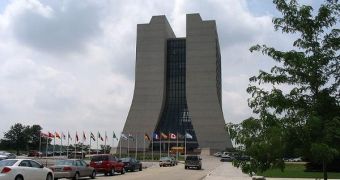Finding the elusive Higgs boson, the particle that makes energy acquire mass, has been the goal of physicists for several decades, and projects such as Fermilab and the Large Hadron Collider (LHC) have appeared to accomplish exactly that. Now, due to the DZero collaboration at the Department of Energy (DOE)'s Fermi National Accelerator Laboratory, researchers have been able to complete the most precise measurement of the W boson to date, thus restricting the possible bounds for the mass of the Higgs. This breakthrough could mean that God's particle might soon be found and studied.
“This beautiful measurement illustrates the power of the Tevatron as a precision instrument, and means that the stress test we have ordered for the Standard Model becomes more stressful and more revealing,” Chris Quigg, who is a theorist at the Fermilab, says. The Tevatron is currently the highest energy-particle collider in the world (until the LHC is repaired in September), and is, in fact, a synchrotron that accelerates protons and anti-protons to very high speeds, and then smashes them together to study the aftermath.
“This is one of the most challenging precision measurements at the Tevatron. It took many years of efforts from our collaboration to build the 5,500-ton detector, collect and reconstruct the data and then perform the complex analysis to improve our knowledge of this fundamental parameter of the Standard Model,” Dmitri Denisov, who is a spokesman for DZero, adds.
With all the attention that the Higgs boson now receives, it becomes very easy even for scientists to forget at this point the fundamental role that the W boson plays in the Standard Model. It's the particle that makes the Sun shine, despite being just 85 times heavier than a proton. Now, its value has been calculated with a precision of 0.05 percent, and, for those who are interested in higher physics, here is the result: the mass of the particle is 80.401 +/- 0.044 GeV/c^2.
The solution has been presented last Sunday at the annual meeting on Electroweak Interactions and Unified Theories, which takes place in La Thuile, the Italian Alps, between Saturday, March 7th, and Saturday, March 14th, 2009. Over the last year, the collaboration between Fermilab and the DZero particle detector yielded no less than 46 scientific papers. At this rate, the American facility might just beat CERN's LHC to the Higgs boson after all.

 14 DAY TRIAL //
14 DAY TRIAL //